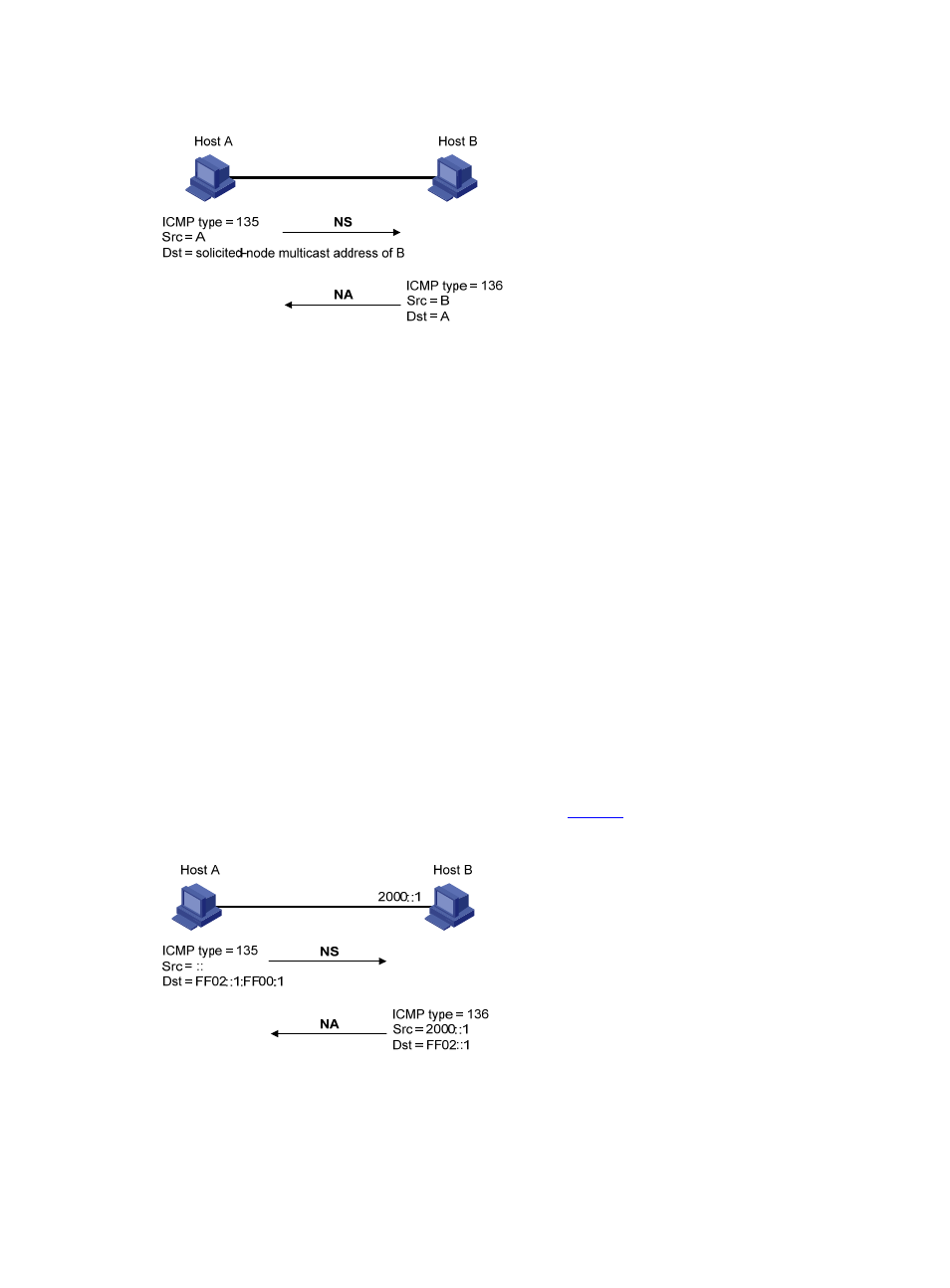Neighbor reachability detection, Duplicate address detection, Figure 3 – H3C Technologies H3C SecPath F1000-E User Manual
Page 107

7
Figure 3 Address resolution
The address resolution process is:
1.
Host A multicasts an NS message. The source address of the NS message is the IPv6 address of the
sending interface of Host A and the destination address is the solicited-node multicast address of
Host B. The NS message contains the link-layer address of Host A.
2.
After receiving the NS message, Host B judges whether the destination address of the packet is its
solicited-node multicast address. If yes, Host B learns the link-layer address of Host A, and then
unicasts an NA message containing its link-layer address.
3.
Host A acquires the link-layer address of Host B from the NA message.
Neighbor reachability detection
After Host A acquires the link-layer address of its neighbor Host B, Host A can use NS and NA messages
to check whether Host B is reachable.
1.
Host A sends an NS message whose destination address is the IPv6 address of Host B.
2.
If Host A receives an NA message from Host B, Host A decides that Host B is reachable. Otherwise,
Host B is unreachable.
Duplicate address detection
After Host A acquires an IPv6 address, it will perform Duplicate Address Detection (DAD) to check
whether the address is being used by any other node (similar to the gratuitous ARP function in IPv4). DAD
is accomplished through NS and NA message exchanges.
shows the DAD process.
Figure 4 Duplicate address detection
The DAD process is:
1.
Host A sends an NS message whose source address is the unspecified address and whose
destination address is the corresponding solicited-node multicast address of the IPv6 address to be
detected. The NS message contains the IPv6 address.
